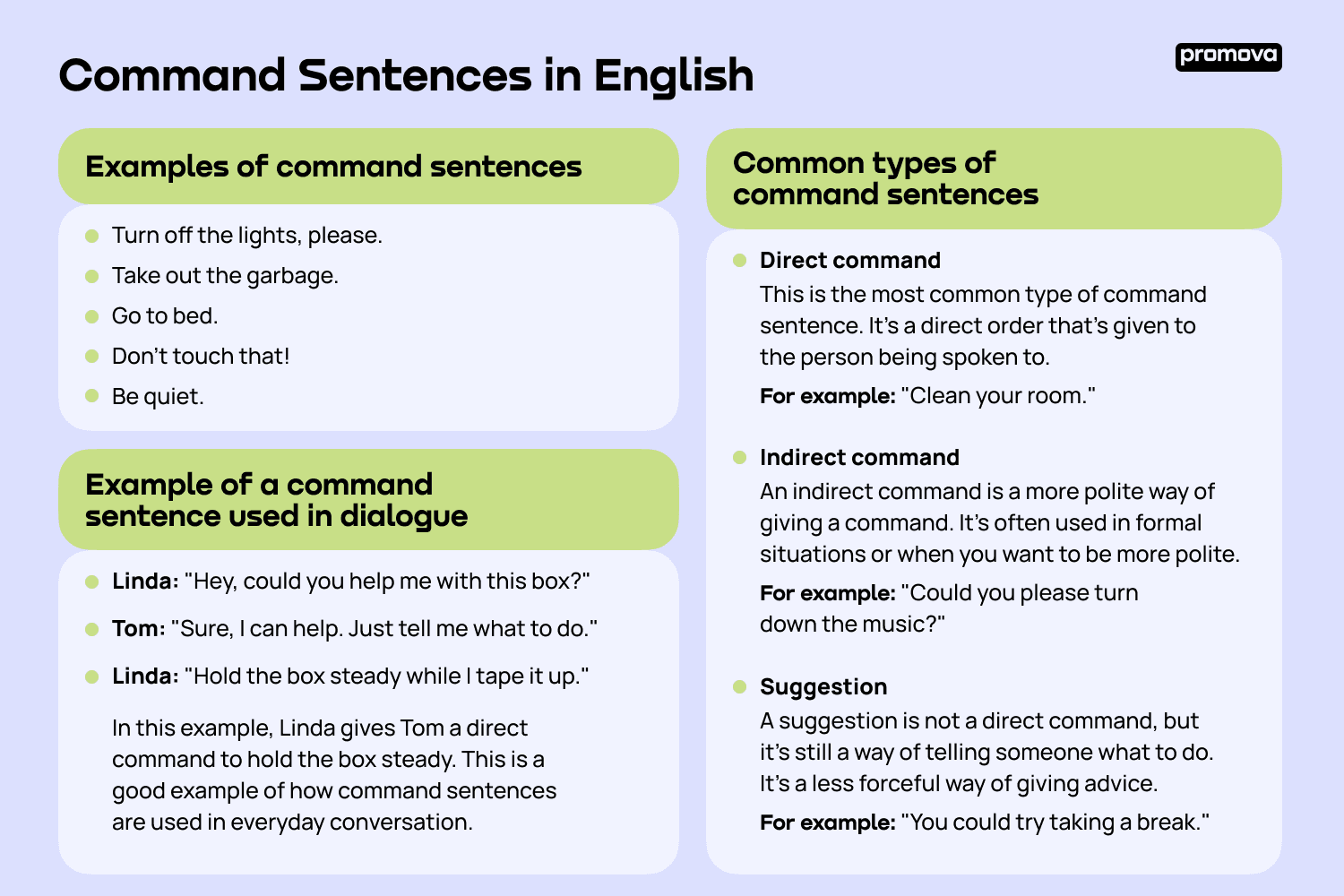Command Sentences in English
Contents
One of the most commonly used sentence types is the command sentence, which is essential in everyday communication. In this reference, we'll explore what command sentences are, how to use them, and provide examples to help you understand them better.
What are command sentences?
A command sentence is a type of imperative sentence that gives instructions, directions, or orders to the person being spoken to. They are used to tell someone what to do or not to do. In other words, command sentences are used to get someone to take action.

Examples of command sentences
Here are some examples of command sentences:
- Turn off the lights, please.
- Take out the garbage.
- Go to bed.
- Don't touch that!
- Be quiet.
In these examples, the speaker is giving a direct order to the person being spoken to. Note that command sentences often use the base form of the verb (the verb without "to").
Difference between commands and requests
It's important to note that commands and requests are different sentence types.
A request is a polite way of asking someone to do something, whereas a command is a more direct way of telling someone what to do.
For example, "Could you please pass the salt?" is a request, while "Pass me the salt" is a command. In the first sentence, the speaker is asking for a favor, while in the second sentence, the speaker is giving a direct order.
How to form a command sentence in English grammar
To form a command sentence, you need to use the imperative form of the verb. The imperative form helps us give commands, and it's the same as the base form of the verb (the verb without "to").
For example, to form a command sentence with the verb "to eat," you would use "eat" as the imperative form. Here's an example: "Eat your vegetables."
It's worth noting that command sentences can be positive or negative. To form a negative command, you need to use "don't" before the verb. For example: "Don't eat that cake."
1
Common types of command sentences
There are several types of command sentences that you need to be aware of. Here are some of the most common:
- Direct command
This is the most common type of command sentence. It's a direct order that's given to the person being spoken to. For example: "Clean your room."
- Indirect command
An indirect command is a more polite way of giving a command. It's often used in formal situations or when you want to be more polite. For example: "Could you please turn down the music?"
- Suggestion
A suggestion is not a direct command, but it's still a way of telling someone what to do. It's a less forceful way of giving advice. For example: "You could try taking a break."
Example of a command sentence used in dialogue
Here's an example of a command sentence used in dialogue:
- Linda: "Hey, could you help me with this box?"
- Tom: "Sure, I can help. Just tell me what to do."
- Linda: "Hold the box steady while I tape it up."
In this example, Linda gives Tom a direct command to hold the box steady. This is a good example of how command sentences are used in everyday conversation.
Summary
Command sentences are used to give direct orders and instructions to the person being spoken to. To form a command sentence, you need to use the imperative form of the verb. It's important to note that commands and requests are different sentence types, and you need to use them appropriately. Try using this structure more often in your speech and soon enough you'll be a much more assertive English speaker!



Comments